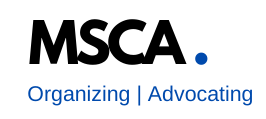EY-Parthenon Report Released at June BHE Meeting
June 24, 2020
At yesterday’s Board of Higher Education (BHE) meeting, EY-Parthenon, a consulting firm with an office in Boston, presented its analysis of the financial risk across plausible FY21 scenarios for the state universities and community colleges.
The meeting was recorded and we will post a link to the recording when that is available on the BHE site.
The presentation lasted more than two hours, and there was a similar presentation by UMass President Marty Meehan and UMass staff.
What follows in my interpretation of the report based on the presentation. Click here to view the executive summary PowerPoint presentation.
The firm provided “a normalized, aggregate view of the degree, nature, and timeline of liquidity risk across the higher education system….” This included the nine state universities and the 15 community colleges institutions, but excluded the UMass campuses.
The firm investigated three scenarios described here. In the most pessimistic of the three scenarios, four of the nine state universities are projected to not have 30 days of liquid operating funds available, the threshold the firm used to define “financially viable.”
The firm indicates that proposed restructuring of the Massachusetts State College Building Authority (MSCBA) “could help avoid estimated FY21 liquidity shortfalls under the sensitivities performed” and proposes mitigation strategies.
However, they go on to note that “even with MSCBA restructuring, there could be a considerable cash burn unless institutions undertake significant cost reductions; identified strategies include:
►Furlough program, hiring freeze, raise cap, and other personnel cost reductions
►Reduction of travel and transportation expenses
►Decrease in administrative, facilities, equipment, and other costs”
It is important to note that furlough would need to be negotiated with the MSCA, APA and AFSCME. The MSCA has not been approached to consider furloughs.
The final page of the executive summary states “As scenarios for FY21 continue to unfold, actions at the state, campus, and department level can position institutions for resiliency in FY21 and beyond,” providing general recommendations to the governor and legislature, campus Boards of Trustees, and the Department of Higher Education.
The long and short of the report is that significant financial pain is here, may get worse, and may last for two or more years, but the nine state universities remain financially viable.
This does not mean that we should sit back and ride out the storm. The MSCA’s and MTA’s efforts on increased, long-term funding of the institutions, and calls for short-term federal help, are what we need. We will be asking for your participation in these efforts.
